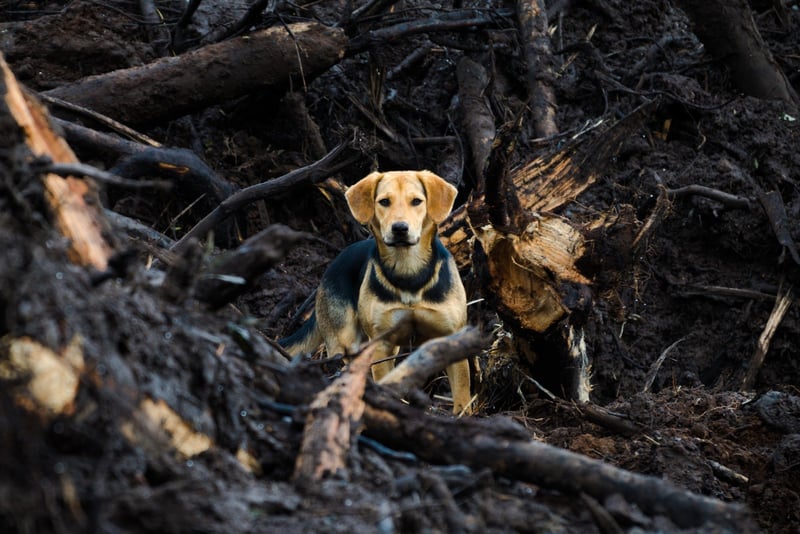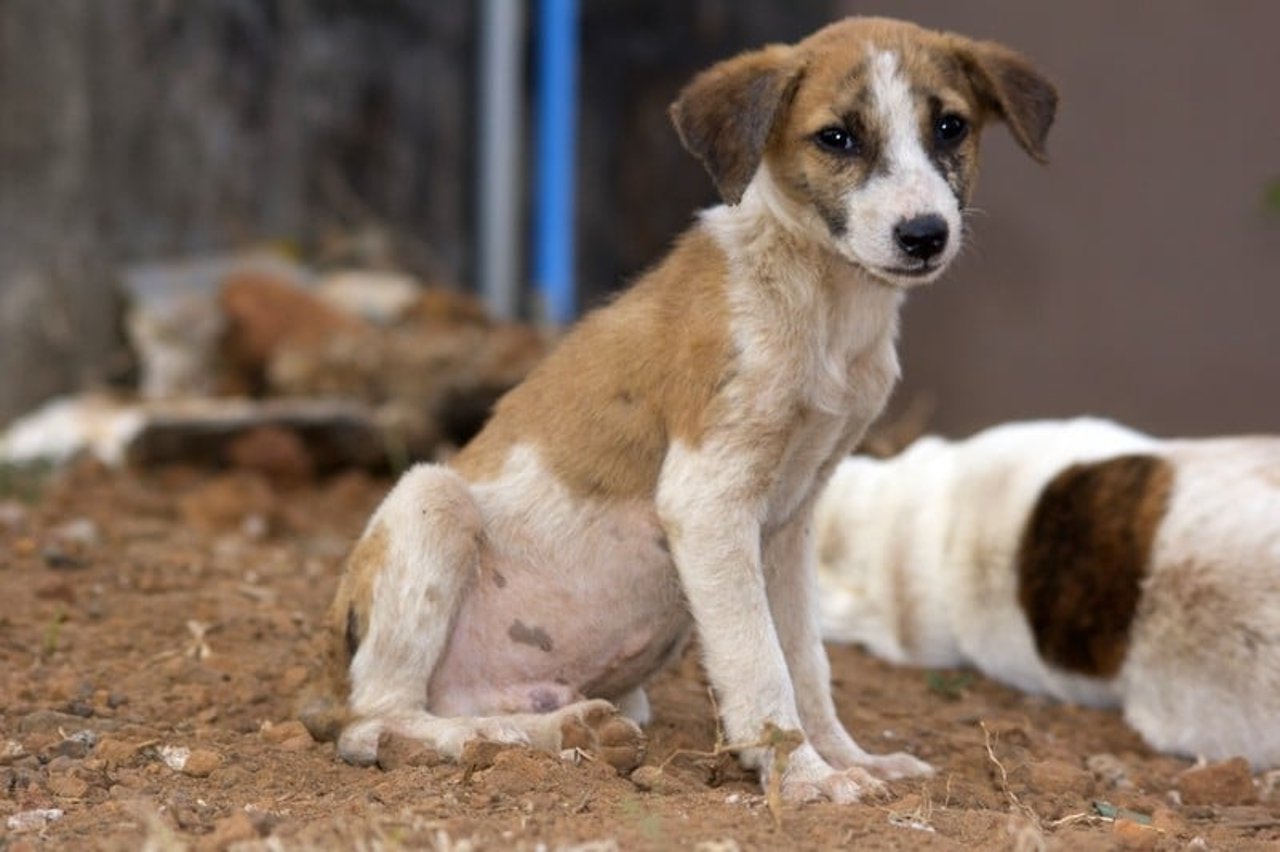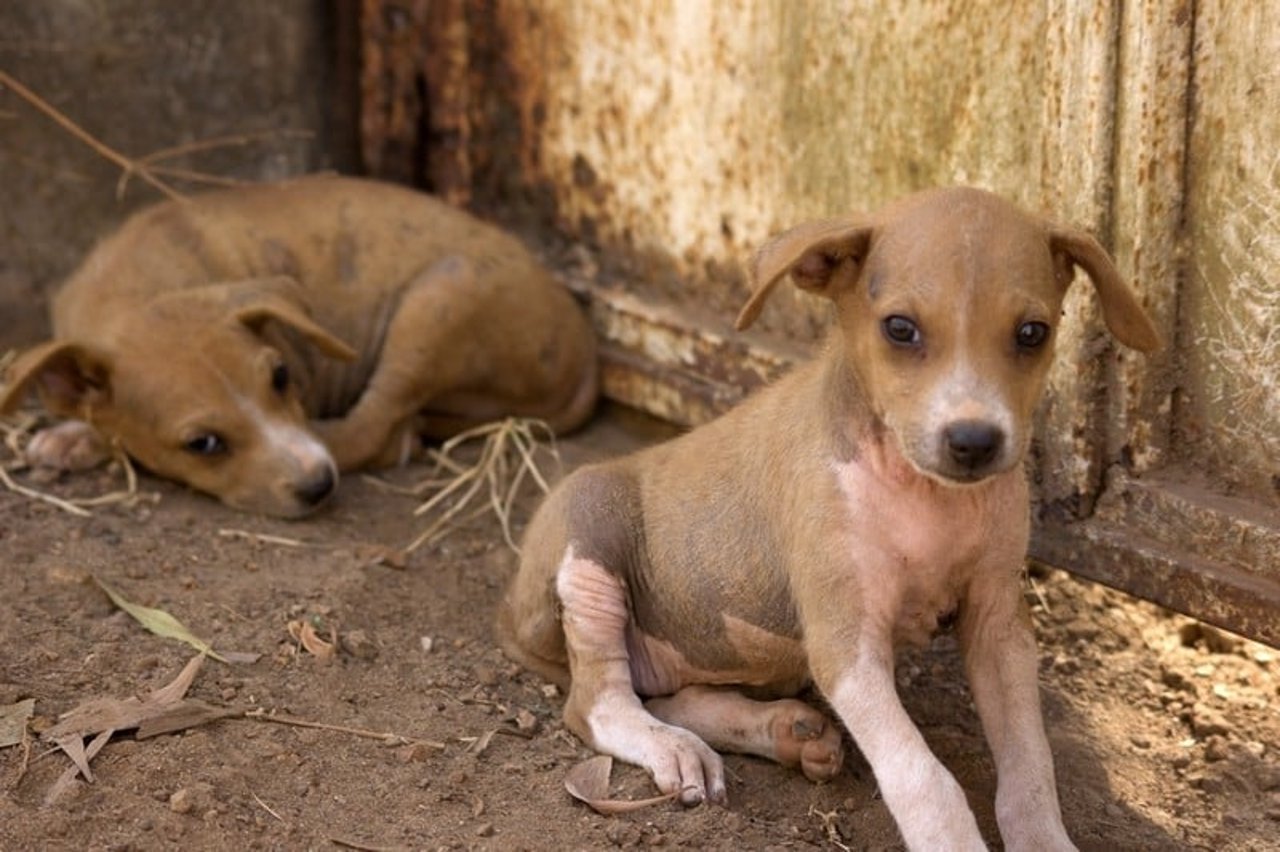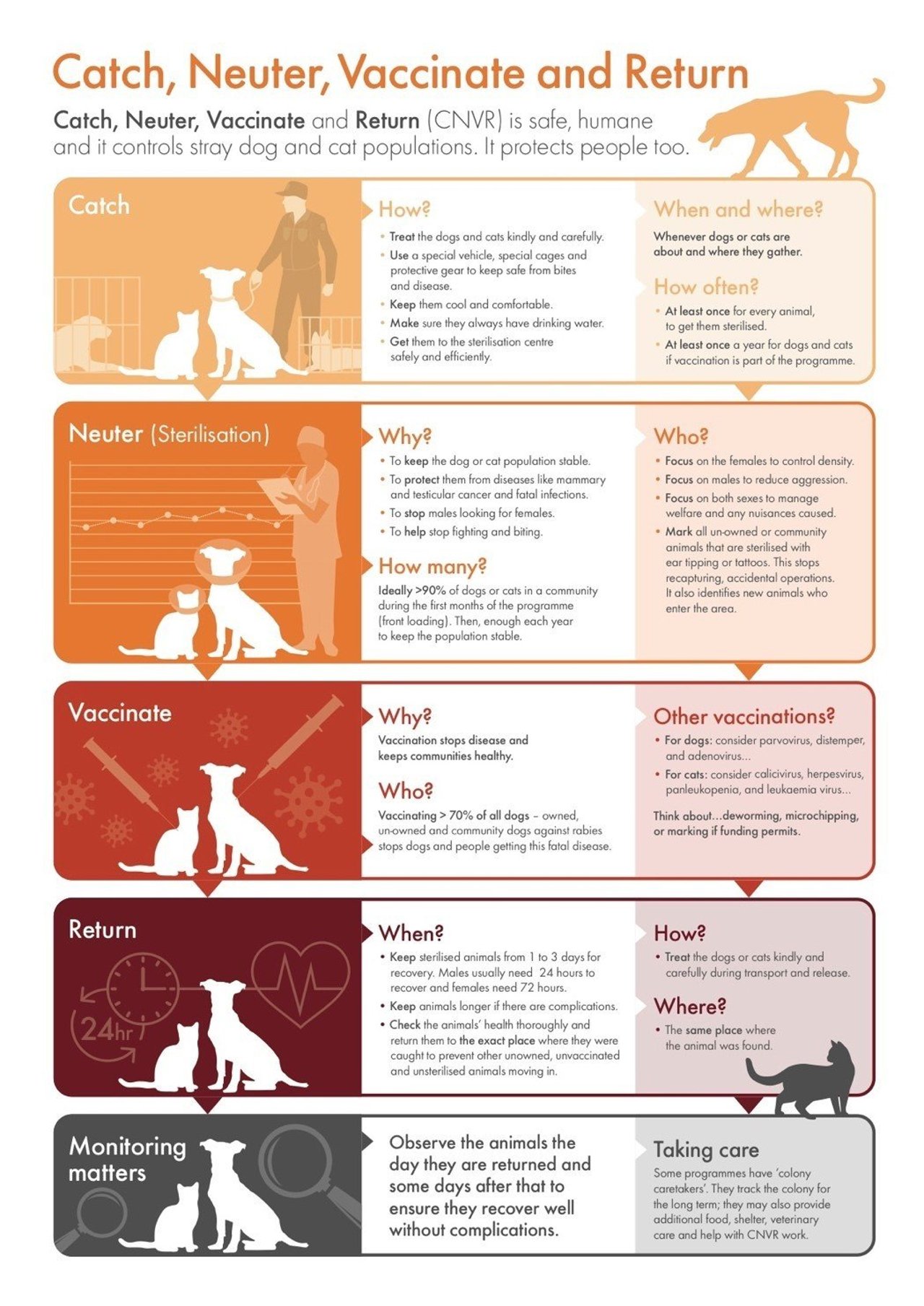
Catch, Neuter, Vaccination And Release ( CNVR Schemes)
Do stray dogs get veterinary treatment?
There are more than 30 million dogs in India and the dog population is growing rapidly due to a lack of adequate measures to implement effective sterilisation programmes. Stray dogs rarely get the veterinary treatment, care, regular food, and compassion they deserve and an increase in their population in public areas can cause problems for communities for e.g. dog bites, attacks, conflicts, soiling, diseases, and traffic accidents. These problems can lead to a change in behaviour of people and dogs being feared, persecuted, and cruelly culled.
Mistreatment and Culling of dogs
Mistreatment and culling do not address the root causes or prevent anything. Comprehensive humane Dog Population Management (DPM) programme with thorough implementation is the only effective method. Successful DPM programmes, which incorporate Catch, Neuter, Vaccination, and Release (CNVR) schemes, give both dogs and people healthier and happier lives.
CNVR Schemes
CNVR schemes have been used by local governments and NGOs worldwide for decades to cope with growing dog population in areas.
The CNVR process involves humanely trapping or catching dogs. They are neutered and marked accordingly, vaccinated usually against rabies, but sometimes against other diseases such as parvovirus. They are given health checks and after being cared for in a holding facility, are returned to the exact location where they were caught 1-5 days later.
Dogs may also be dewormed and microchipped, but this depends on the CNVR scheme’s available funds and objectives. CNVR will not work by itself, it heavily depends on the tolerance level of people towards existing stray dogs in the area.
What are the key elements of CNVR?
CNVR includes the following key elements:
Training – All hands-on workers should be highly trained in humane catching, humane and safe sterilisation, post-operative care, identification, and registration of animals where appropriate.
Equipment – These can include trucks, cages, leads, treats, gloves, catching poles, nets, muzzles, drugs for catching, and of course surgical equipment for the sterilisations.
Good Community Relationships – They can help with finding dogs for e.g. involved in establishing feeding patterns so the dogs can be caught easily when they come for food and also supporting in their return.
Temporary Holding Facilities –After surgery, recovery can take up to 1-5 days before the dogs can be returned to the streets. Female dogs usually take longer to recover from spaying operations.
Logistics, Implementing, And Monitoring Organisations – Planners, administrative staff, computers, and office equipment are vital for the smooth running of a CNVR programme. In addition, an effective monitoring system is a key to success in implementing all the activities and efforts.
World Animal Protection has developed an infographic that is easy to understand and can be used by anyone. We encourage reproduction control, responsible ownership, and veterinary care for the welfare of dogs.
To know more about CNVR, please read the All Eyes on Dogs report
The CNVR process involves humanely trapping or catching dogs. They are neutered and marked accordingly, vaccinated usually against rabies, but sometimes against other diseases such as parvovirus.


